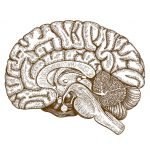The Lungs Actually Produce Blood Cells
Researchers from the University of California, San Francisco recently discovered that the lungs play a key role in blood production.1 This runs contrary to a century-old assumption that the bone marrow produces all of our blood components. Megakaryocytes have long been considered a cell type almost exclusive to the bone marrow, and responsible for blood formation. Though they have been seen in the lungs before, their involvement in platelet production has been grossly underestimated. Scientists have now watched megakaryocytes producing up to 50% of the platelets in living mice murine models.
Though theses studies utilized mice, Mark R. Looney, one of the lead researchers says, “What we’ve observed here in mice strongly suggests the lung may play a key role in blood formation in humans as well.”
Follow the Bioluminescent Road
This discovery utilized a brand new type of imaging technology, based upon a 2-photon intravital imaging system. The imaging method involves adding a substance called green fluorescent protein (GFP) into the mouse genome – GFP is a protein aspect of bioluminescent sea creatures. The platelets began to put off a green fluorescence as they moved around the body. In this way, their origins, and production could be traced in real time. The researchers began to notice large numbers of megakaryocytes inside the lung tissue, which upon further analysis were found to be producing more than 10 million platelets per hour in the lungs – which is at least half of total body platelet production.
Study Reveals
The study explains that the megakaryocytes are likely being produced in the bone marrow, and then are sent to the lungs. Once in the lungs, they begin platelet formation. Another team member, Guadalupe Ortiz-Muñoz, theorizes that “it’s possible that the lung is an ideal bioreactor for platelet production because of the mechanical force of the blood, or perhaps because of some molecular signaling we don’t yet know about.”
More than Just Marrow
The research team has shown also that by transplanting tissue into mice that have been genetically modified to have no blood stem cells in their bone marrow, that megakaryocytes repopulate the bone marrow. In this mouse model, the fluorescent cells from transplanted lung tissue went into the bone marrow and not only produced platelets, but also neutrophils, B cells and T cells. Of course, these studies will have to be replicated in humans, but appears promising for conditions such as myelodysplastic syndrome.
Source:
- Lefrançais E, Ortiz-muñoz G, Caudrillier A, et al. The lung is a site of platelet biogenesis and a reservoir for haematopoietic progenitors. Nature. 2017
 Node Smith, associate editor for NDNR, is a fifth year naturopathic medical student at NUNM, where he has been instrumental in maintaining a firm connection to the philosophy and heritage of naturopathic medicine amongst the next generation of docs. He helped found the first multi-generational experiential retreat, which brings elders, alumni, and students together for a weekend campout where naturopathic medicine and medical philosophy are experienced in nature. Three years ago he helped found the non-profit, Association for Naturopathic ReVitalization (ANR), for which he serves as the board chairman. ANR has a mission to inspire health practitioners to embody the naturopathic principles through experiential education. Node also has a firm belief that the next era of naturopathic medicine will see a resurgence of in-patient facilities which use fasting, earthing, hydrotherapy and homeopathy to bring people back from chronic diseases of modern living; he is involved in numerous conversations and projects to bring about this vision.
Node Smith, associate editor for NDNR, is a fifth year naturopathic medical student at NUNM, where he has been instrumental in maintaining a firm connection to the philosophy and heritage of naturopathic medicine amongst the next generation of docs. He helped found the first multi-generational experiential retreat, which brings elders, alumni, and students together for a weekend campout where naturopathic medicine and medical philosophy are experienced in nature. Three years ago he helped found the non-profit, Association for Naturopathic ReVitalization (ANR), for which he serves as the board chairman. ANR has a mission to inspire health practitioners to embody the naturopathic principles through experiential education. Node also has a firm belief that the next era of naturopathic medicine will see a resurgence of in-patient facilities which use fasting, earthing, hydrotherapy and homeopathy to bring people back from chronic diseases of modern living; he is involved in numerous conversations and projects to bring about this vision.









